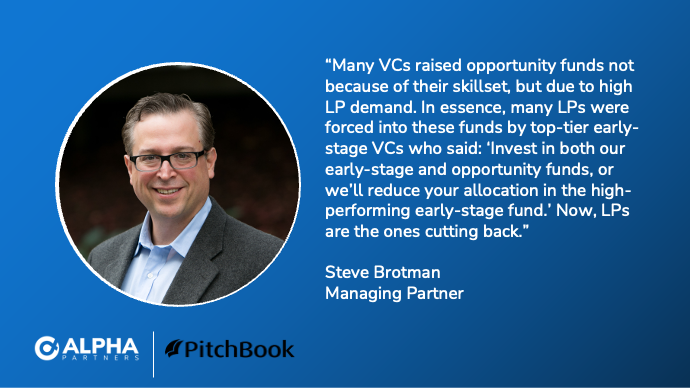Demand for VC funds that double down on winning investments is shifting as investors see their best companies as overvalued, overcapitalized and without a clear path to go public.
GPs typically run opportunity funds to back standout portfolio companies as they mature. The pitch to LPs is that it increases exposure to growth-mode companies on the verge of profitability or an IPO.
With the IPO slowdown, that pitch has fallen flat. VCs have dialed back their opportunity offerings—or reoriented those strategies to go after secondary stakes in startups or other venture funds.
In extreme cases, investors are abandoning capital they’ve already raised. CRV is returning more than half its $500 million opportunity fund, the veteran tech investor said earlier this month, citing untenable startup valuations.
Part of the pushback from LPs on continuation funds stems from an “inherent conflict of interest,” said Steve Brotman, founder and managing partner of Alpha Partners.
“Many VCs raised opportunity funds not because of their skillset, but due to high LP demand,” Brotman said. “In essence, many LPs were forced into these funds by top-tier early-stage VCs who said: ‘Invest in both our early-stage and opportunity funds, or we’ll reduce your allocation in the high-performing early-stage fund.’ Now, LPs are the ones cutting back.”
Newfangled opportunity funds
The opportunity fund hasn’t been left for dead, and there are signs that VCs may be changing their definition of the term.
VC firms have raised at least $3.4 billion for opportunity-style funds this year, more than double last year’s total. Still, it’s a far cry from 2021, when at least 120 opportunity funds hit the market with a cumulative $12.1 billion.
Read the full article here.

